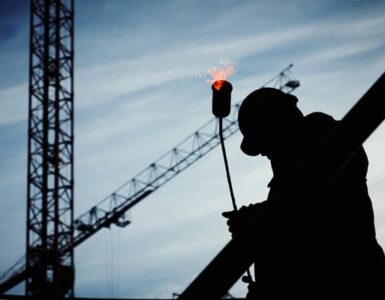Hospitals and outpatient surgical centers across the state are performing non-emergency surgeries once again after Governor Doug Ducey lifted a ban that was put in place in mid-March to ensure facilities had enough protective equipment and empty beds to handle all COVID-19 patients.
Hospital officials said they now are well equipped and have started necessary surgeries and procedures like knee and hip replacements, tumor removals and colonoscopies.

“We exist to take care of patients, so we really want to get back to doing what we do best,” said Dr. J. Scott Anderson, chief medical officer for Banner Boswell Medical Center in Sun City and Banner Del E. Webb Medical Center in Sun City West. “That’s the motivation for our physicians and nurses, and we’re really eager to do it in the safest way possible.”
Sigh of relief for patients, strapped health care providers
The move is not only important for patients needing surgery, but for medical providers that suffered significant financial losses with facilities operating well below capacity for six weeks.
An analysis by the Arizona Hospital and Healthcare Association estimates that its member hospitals alone lost an estimated $430 million to $575 million per month during the ban.
“Member hospitals report revenues are down 30-40 percent due to cancellation of elective procedures and a reduction in emergency department visits,” the association said in a statement issued April 22.
Hospitals a $30 billion powerhouse for Arizona economy
Arizona hospitals contribute an estimated $29.8 billion to the state’s economy and employ almost 185,000 employees, according to economic impact analysis by the Health System Alliance for Arizona.
The report states that direct, indirect, and induced jobs earned a combined $12.3 billion in wages. State and local governments collected $808.7 million in tax revenues from hospitals in 2018.
For large organizations like the nonprofit Banner system and Mayo Clinic, the financial hit has been tremendous.
Mayo, which has major operations in Arizona, projected $3 billion companywide in operating losses for 2020 due to COVID-19, according to a financial narrative issued April 24.
About 30,000 employees’ hours are targeted for cuts, the disclosure document states. To offset the impact, Mayo has received $150 million from the CARES Act, $900 million in advance Medicare payments, and is securing loans.
Banner, which is headquartered in Phoenix, is the largest hospital system in Arizona and the state’s largest private employer with about 43,000 employees. Like Mayo and other hospital systems, it has had to furlough employees and institute pay cuts.
“For hospitals and practices, it’s definitely had some very significant financial losses, but everyone has had setbacks,” Anderson said. “Health care is no different.”
With elective surgeries back on board, Anderson is optimistic about the industry’s likelihood of financial recovery.
“It’s going to take time but we intend to be here for as long as it takes,” he said. “There’s always going to be a need for doctors, so now our focus is on taking care of the community.”
Green light for elective surgery includes new precautions
Banner and other hospitals have taken steps to isolate COVID-19 hospital units from other units and visitor areas.
Under Gov. Ducey’s executive order, hospitals and surgical centers are required to take a number of protective measures, including providing 20 percent of their capacity for COVID patients. The order, which allowed elective surgeries to start back on May 1, contains a number of requirements including:
-Coronavirus testing of all at-risk health care workers and patients prior to surgery
-Demonstrate greater than a 14-day supply of personal protective equipment like masks, gloves and ventilators
-Ensure adequate staffing and beds
-Ensure appropriate discharge plans for patients being transferred to nursing care facilities, including diagnostic testing for COVID-19
-Implement a universal symptom screening process for staff, patients, and visitors
-Establish an enhanced cleaning process for waiting areas
-Prioritize the restart of elective surgeries based on urgency
Facilities that meet the specified standards also must receive approval from the Department of Health Services before resuming elective surgeries.
Ducey’s executive order is to be considered for repeal or revision every two weeks.
Arizona saving lives under social distancing
As health care facilities slowly come back to life, the governor’s stay-at-home orders likely prevented a crisis similar to the one that overwhelmed New York City, Dr. Amish Shah said in an update for Chamber Business News.
Arizona’s wide open spaces played a part, said Shah, an attending physician for nonprofit Dignity Health in Phoenix.
“In Arizona, we are much more spread out and we rely much less on elevators, small apartments in older buildings, and public transportation,” Shah said. “We do not have as much international traffic. We also had a few more weeks to prepare and acclimate to the idea of social distancing, whereas New York was quickly caught off guard.”
An analysis of other countries that took measures similar to Arizona reveal that social distancing also likely saved about 1,400 lives, with more to come, Dr. Shah said.
“This might be a low estimate given we have a large senior population. Moreover, with an estimated 3-4 people hospitalized to every one death, Arizona’s health care system would have been easily overwhelmed without our lockdown measures,” he said.
“Millions of pieces of personal protective equipment are getting to where they are needed, hospital bed and ICU bed and ventilator capacity have increased tremendously, and testing has increased greatly. We are much better prepared than we were six weeks ago.”
















Add comment